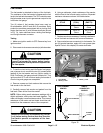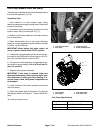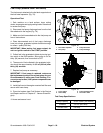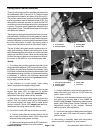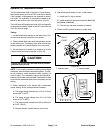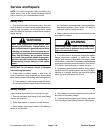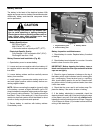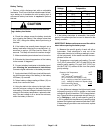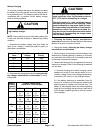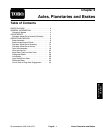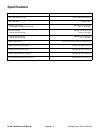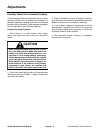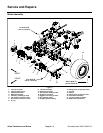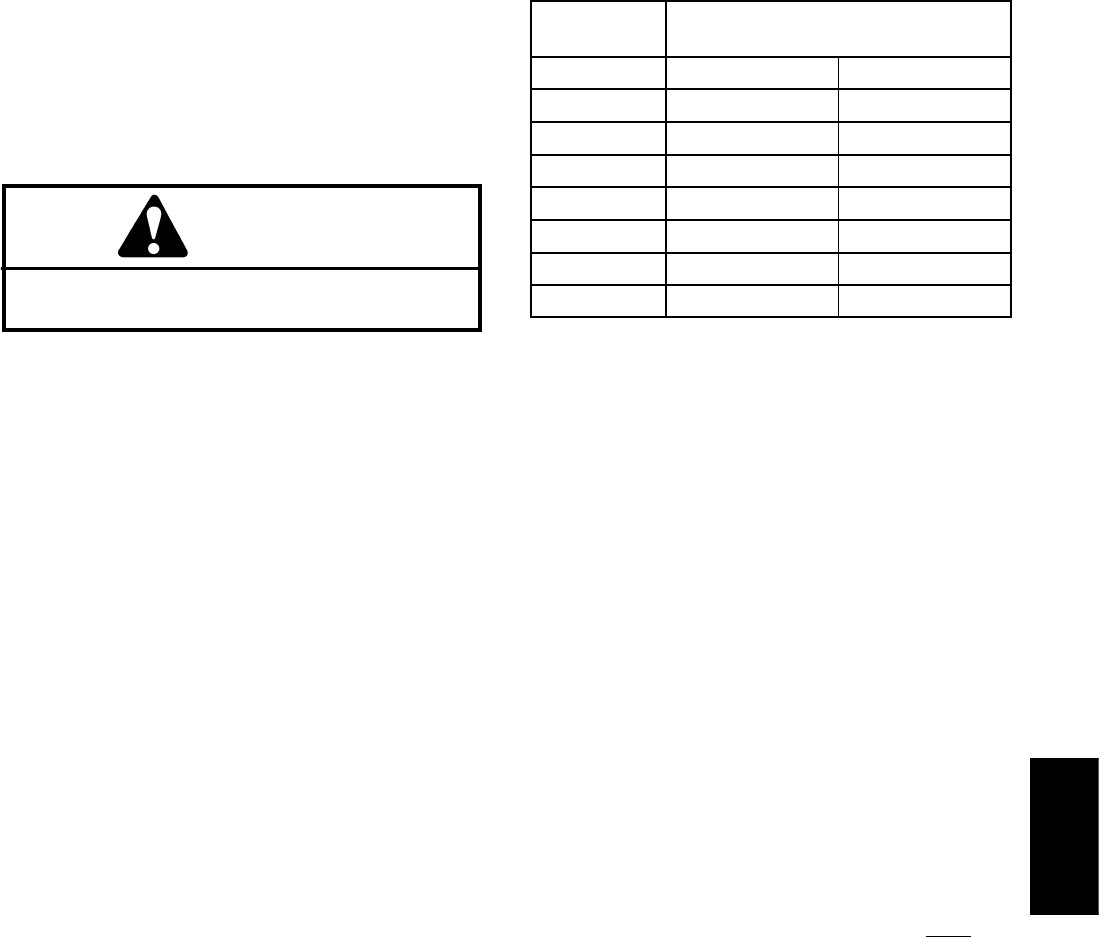
Groundsmaster 4000--D/4010--D Page 5 -- 65 Electrical System
Battery Testing
1. Perform a high--discharge test with an adjustable
load tester. Thisisoneof themostreliablemeansof test-
ing a battery as it simulates the cold--cranking test. A
commercial battery load tester is required to perform
this test.
CAUTION
Follow the manufacturer’s instructionswhen us-
ing a battery load tester.
A. Check the voltage across the battery terminals
prior to testing the battery. If the voltage is less than
12.4 VDC, charge the battery before performing a
load test.
B. If the battery has recently been charged, use a
battery load tester following the manufacturer’s in-
structions to apply a 150 Amp load for fifteen (15)
seconds. This step will remove the surface charge.
C. Makesure batteryterminals arefree ofcorrosion.
D. Estimate the internal temperature of the battery
to the nearest 10 degrees F.
E. Connect a battery load tester to the battery termi-
nals following the manufacturer’s instructions.
Connect a digital multimeter to the battery terminals.
F. Apply atest load of345 Amps(one halfthe crank-
ing performance rating of the battery) to the battery
for fifteen ( 15) seconds.
G. Take a battery voltage reading at fifteen (15) se-
conds, then remove the load.
H. Using the table in the column to the right, deter-
mine the minimum voltage for the battery tempera-
ture reading. If the testvoltage is below theminimum
voltage for the battery temperature, replace the bat-
tery.Ifthetestvoltageisatorabovetheminimum,
return the battery to service.
Minimum
Voltage
Battery
Temperature
9.6 70
o
F (and up) 21
o
C (and up)
9.5 60
o
F 16
o
C
9.4 50
o
F 10
o
C
9.3 40
o
F 4
o
C
9.1 30
o
F -- 1
o
C
8.9 20
o
F -- 7
o
C
8.7 10
o
F -- 12
o
C
8.5 0
o
F -- 18
o
C
2. If the battery electrolyte is accessible, the specific
gravity of the electrolyte can be used to determine the
battery condition.
IMPORTANT: Make sure the area around the cells is
clean before opening the battery caps.
A. Measure the specific gravity of each cell with a
hydrometer. Draw electrolyte in and out of the
hydrometer barrel prior to taking a reading to w arm--
up the hydrometer. At thesametimetakethetem-
perature of the cell.
B. Temperature correct each cell reading. For each
10
o
F(5.5
o
C) above 80
o
F (26.7
o
C) add 0.004 to the
specific gravity reading. For each 10
o
F(5.5
o
C) be-
low 80
o
F (26.7
o
C) subtract 0.004 from the specific
gravity reading.
Example: Cell Temperature 100
o
F
Cell Gravity 1.245
100
o
F minus 80
o
F equals 20
o
F
(37.7
o
C minus 26.7
o
C equals 11.0
o
C)
20
o
F multiply by 0.004/10
o
F equals 0.008
(11
o
C m ultiply by 0.004/5.5
o
C equals 0.008)
ADD (conversion above) 0.008
Correctionto80
o
F (26.7
o
C) 1.253
C. If the difference between the highest and lowest
cell specific gravity is 0.050 or greater or the lowest
cellspecificgravity islessthan 1.225,chargethe bat-
tery. Charge at the recommended rate and time giv-
en in Charging or until all cells specific gravity is
1.225orgreaterwiththedifferenceinspecificgravity
between the highest and lowest cell less than 0.050.
If these charging conditions can not be met, replace
the battery.
Electrical
System



